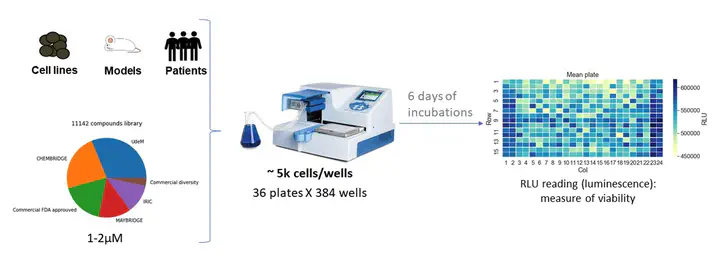Identification of Potential Therapeutic Targets in AML Through Integration of Genomics Data and Small Molecule Screening Results

Safia Safa-tahar-henni, co-supervision with Brian Wilhelm
Acute myeloid leukemia (AML) research has identified some recurrent mutations, such as KMT2A gene rearrangements that are present in about 65% of childhood AML samples. Despite this discovery, the development of the disease is still not well understood. Research shows that rearrangement of the KMT2A gene alone can trigger AML in models. This is not the case though for patients with recurrent secondary mutations. Safia Safa-tahar-henni’s hypothesis is that by comparing the effect of therapeutic compounds between models and patients, it will be possible to demonstrate the impact of recurrent secondary mutations despite the heterogeneity of patients. A high-throughput chemical screening of 12,000 compounds is performed in a single dose. These compounds are tested on 50 samples, from patients and model leukemias with different KMT2A gene rearrangement. These samples will give access to information about expression and exome. This work will help advance our understanding of the biology of AML. It will also help identify new compounds that could be used for therapeutic purposes in patients as well as in the development of a clinical diagnosis.